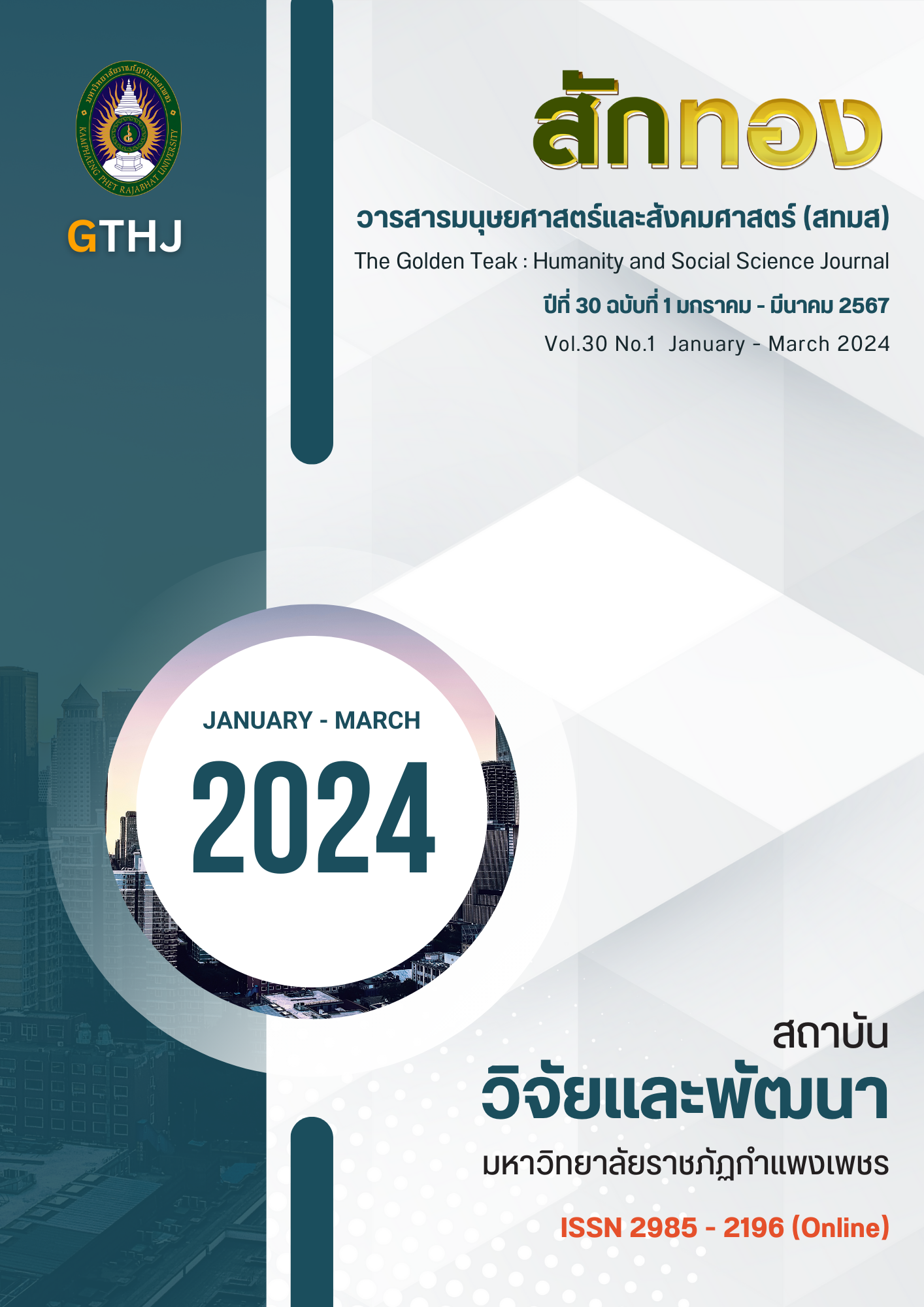Opinions of Chief Executives of Provincial Administrative Organization Toward the Correlation Between Effective Future Action Strategies for Human Resource Management and Human Resource Management to Thailand 4.0 Strategy
Main Article Content
Abstract
The objectives of this research are to check the opinions of 66 chief executives of provincial administrative organizations in three sides: 1) the level of opinion on effective future action strategies for human resource management: the independent variable, 2) the level of opinion on human resource management according to the Thailand 4.0 strategy: the dependent variables, and 3) the correlation between those two kinds of variables. The sample group which is drawn from 76 provinces by proportionally geographical random sampling answers the questionnaires, those of which are later statistically analyzed using mean, standard deviation, and Spearman’s correlation. The results show that: 1) as a whole, opinion on both kinds of variables are at high level; 2) there is a positive correlation between these kinds of variables at statistical level of significance of 0.1, as well as a score of Spearman’s correlation at .84
Article Details

This work is licensed under a Creative Commons Attribution-NonCommercial-NoDerivatives 4.0 International License.
บทความที่ได้รับการตีพิมพ์เป็นลิขสิทธิ์ของวารสาร สักทอง : วารสารมนุษยศาสตร์และสังคมศาสตร์ สถาบันวิจัยและพัฒนา มหาวิทยาลับราชภัฏกำแพงเพชร
ข้อคิดเห็นใดๆ ที่ปรากฎในวารสารเป็นวรรณกรรมของผู้เขียนโดยเฉพาะ ซึ่งมหาวิทยาลัยราชภัฏกำแพงเพชรและบรรณาธิการไม่จำเป็นต้องเห็นด้วย
References
Boonchujarat, K. (2019). Factors related to the work of local development workers responsibilities of the center for education and community development Phetchaburi province. Master’s Thesis Education Department, Silapakorn University. [In Thai]
Chaochuensuk, W. (2017). Human resource development within the office of the civil service commission. Master’s Thesis Business Administration, Dhurakij Pundit University. [In Thai]
Department of Local Government Promotion. (2020). Information of local government organizations. Bangkok : Ministry of Interior. [In Thai]
Kositanon, W. (2015). Human resource development strategies of local administrative organizations according to the guidelines: New government management. Chankasemsan Journal 1995, 21(41), 39-48.
Krejcie, R. V., & Morgan, D. W. (1970). Determining sample size for research activities. Educational and Psychological Measurement, 30(3), 607-610.
Kulpeng, K. (2020). Recruitment strategy. Bangkok : Fine Print. [In Thai]
McLagan, Patricia A. (1989). Models of HRD Practice. Training and development Journal, 43 (4), 49-59.
Nimchitt, S. (2016). Strategic human resource management and high potential organization. Journal of Humanities, Social Sciences and Arts, 9(2), 129-144. [In Thai]
Niwasanon, B. (2019). Human resource development in provincial administrative organization, Nonthaburi. Master’s Thesis Public Administration and Major in Public Administration, Dhurakij Pundit University. [In Thai]
Office of the Civil Service Commission. (2020). Knowledge skills and competencies required for the position. Bangkok : Office of the Civil Service Commission (OCSC). [In Thai]
Panpinit, S. (2008). Social science research techniques. (3 rd ed.). Bangkok : Wittayapat. [In Thai]
Sirichotirat, N (2019). Principles of human resource management in the 21st century. Bangkok : Chulalongkorn University. [In Thai]
Sorat, T. (2020). Human resources preparation for Thailand 4.0. [Online]. Available : http://www.tanisorat.com [2020, January 20]. [In Thai]
Srisaat, B. (2017). Principles of preliminary research. (9 th ed.). Bangkok : Suwiriyasan. [In Thai]
Supanti, K. (2018). Modern human resource management and performance effectiveness of personnel in agencies under the ministry of agriculture and agricultural cooperatives. Master’s Thesis Business Administration, Suan Dusit Rajabhat University. [In Thai]
Yothakhong, S. (2017). Factors related to personnel administration of subdistrict administrative organization. A case study siKhot subdistrict chaturaphakorn phiman district, Loei province. Master’s Thesis Graduate School, Mahamakut Wittayalai University. [In Thai]


